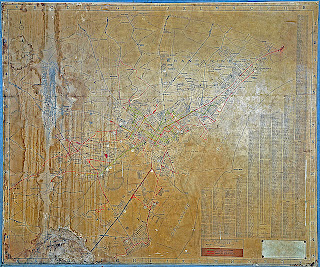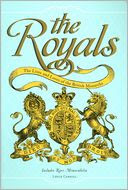The Automobile and the City
In late-19th century Detroit, the primary modes of transportation were walking or using horses. Although the invention of the "safety bicycle" in 1885 and the reinvention of the pneumatic tire in 1888 finally made bike riding widely available, they were never a chief mode of transit, let alone the transportation of goods. Using a bicycle to get to work in Detroit in February probably wasn't seen before asphalt streets were plowed by gas-powered trucks. Cyclists in Detroit, c. 1890. Courtesy of the Burton Historical Collection, Detroit Public Library The overwhelming majority of people in the city simply walked where they needed to go. Only rich families could afford horses of their own. Horse-drawn wagons delivered goods, and locomotives were used for long-distance travel--but the city itself was designed for pedestrians. The first public street car in Detroit ran along Jefferson Avenue 1863 and was pulled by horses. Although there was some (unsuccessful) experimenta










